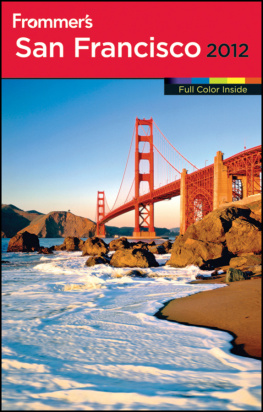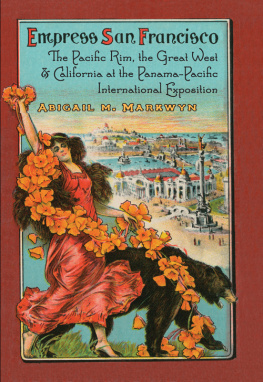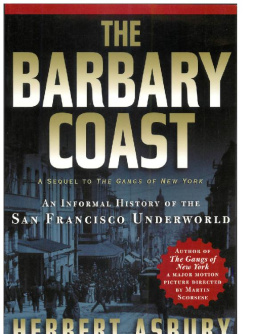PREFACE
The reader who will take the trouble to peruse these pages will discover that the writer has dealt with events rather than with the men who brought them about or who figured in them. A variety of reasons prompted this course, but among them is not included lack of appreciation of the value of biography, nor of the interest which most people take in the doings of those who took part in acts worth recording, and of scenes meriting description. These can be more fittingly treated separately, and under circumstances which will permit their authors to preserve the sense of historical proportion, which suffers disturbance when the personal element forms too large a part of the narrative of a people's progress, thus subordinating the actions of the whole community, which after all that may be said on the subject, makes or mars its own fortunes and shapes its own destiny.
Although the period of active life of San Francisco has been a short one, as historical periods go, it has been crowded with incident. Enough of the latter could be found to present a vivid picture of the career of the metropolis of the Pacific coast, but in this work something more has been attempted than a mere recital of occurrences. It has been the purpose of the author to trace the causes of the growth of the City, and to describe the manifold activities of its citizens. In his effort to do so he has discovered an urgent necessity for condensation, and the elimination of a vast quantity of material at his command. Had he used a tithe of that placed at his disposal the history would have attained enormous proportions. This data, provided by accommodating and zealous friends, to whom I here wish to express my gratitude and obligations, is of a character which would permit of the writing of many monographs with an amplitude of detail which would perhaps make them more interesting to the special reader than these two volumes will be to the public generally.
If the general reader whose familiarity with particular phases of metropolitan life finds that their treatment has been inadequate, he is begged to recall that the activities of a great city are numerous, and that opinions respecting their importance are almost as varied as the number who give them consideration. He is reminded that the writer has sought to deal with a hundred subjects, half, or more, of which would lend themselves to amplification of the sort the minute reader exacts, but which in these volumes the exigencies of space have compelled the compression into a few pages, and sometimes into paragraphs. Episodes in the history of the City which other writers have ably dealt with at great length have necessarily been epitomized in order that a more comprehensive survey of the period in which they occurred might be taken, and because of the writer's belief that their details will grow less interesting as the years wear on until at last they become a mere speck in the historical perspective of San Francisco.
Perhaps that will be the fate of most of that which we now regard as important. In the multitude of happenings which the universal historian has to draw upon he finds comparatively few that he deems worth recording, and fewer still to which he devotes pages of description. Appalling calamities he passes over with a mere mention. Gibbon in his monumental history of Rome tells of the destruction of 250,000 lives in a great earthquake which nearly destroyed the city of Antioch in 551 A. D., and furnishes the reader no other information concerning it than is contained in his conjecture that "the domestic population of the city was swollen by the conflux of strangers to the festival of the Ascension," and he passes over the calamity which befell the Roman world in the second year of the reign of Valentinian with a mere reference to a tidal wave which drowned 50,000 people and to the disruption of a mountain; and his relation of the seismic disaster which overthrew the Colossus of Rhodes is confined to the recital of that fact coupled with a statement of the disposition made of the metal of the statue, which he appears to have introduced, more for the purpose of giving an idea of its size than to illustrate the misfortunes of the Rhodians.
The information, and the imagination necessary to present a graphic and more extended account were not lacking, but the historian was dealing with the events of centuries, and was compelled, while observing the limitations of space, to preserve the sense of proportion. To him tragedies and great calamities were as the ripples on the surface of a pond when a stone is thrown into its depths. When the transitory disturbance ceased the stone was forgotten. Whether consciously or unconsciously Gibbon recognized that it is the sum total of human happenings and experience which make history, and by a process of condensation which permitted him to momentarily turn the limelight of his genius on significant occurrences he succeeded in producing a picture from which a vivid impression is derived, although the canvas is crowded in places to the point of confusion.
On a lesser scale the annalist of a municipality seeks to accomplish the same result. He cannot succeed unless he pursues the same method. The description of a few events, no matter how important they may have seemed to those who participated in them, cannot truthfully portray the growth of a community. Their exceptional character stamps them as aberrations. It is only by the relation of the manner in which a people works out the problem of its everyday existence that a truthful idea of its status can be conveyed. Ebullitions on the surface show that there is heat under the caldron, but they do not tell the story of the causes that produced the heat.
The caldron has boiled fiercely at times in San Francisco and has brought a deal of scum to the top, but when skimmed off and thrown to the side, it is seen that the liquor beneath has been purified in the process. This story is an attempt to truthfully describe the boiling and the clarification. In doing so it has been found necessary to consider many activities and briefly review them, incidentally reciting the causes that have made their practice possible. In the following pages will be found not merely an enumeration and relation of events; they contain, it is hoped, sufficient information to enable the reader to form a judgment of the progress of the people of San Francisco both spiritually and materially.
There is something about the great industries of the State of California which have made the growth of the metropolis possible. The trade of the City and its commerce with foreign nations are treated. The development of the facilities of the great Bay of San Francisco is traced. The banking operations of the City at various periods, and its monetary troubles are noted. The labor troubles of the community, and its effort to promote manufacturing are dealt with. Its civic aspirations and accomplishments in the way of public improvements, receive attention, not in the spirit of the booster, but in a candid fashion which recognizes failures as well as successes. The shortcomings of the people in the administration of the affairs of the municipality, are described, and the blame for them placed where the author thinks it belongs. The recreations of the community: its sports and its amusements; its educational facilities; its libraries and its literature; its fraternal and social organizations; its celebrations; its journalism and periodical publications; its homes and its hotel and restaurant life; its art and its architecture; its churches and its charities are all included in the survey, and it is hoped that all these varied activities have been so correlated that the reader will find it possible to form a correct judgment of the present status of the metropolis and of the means by which it has been attained.








